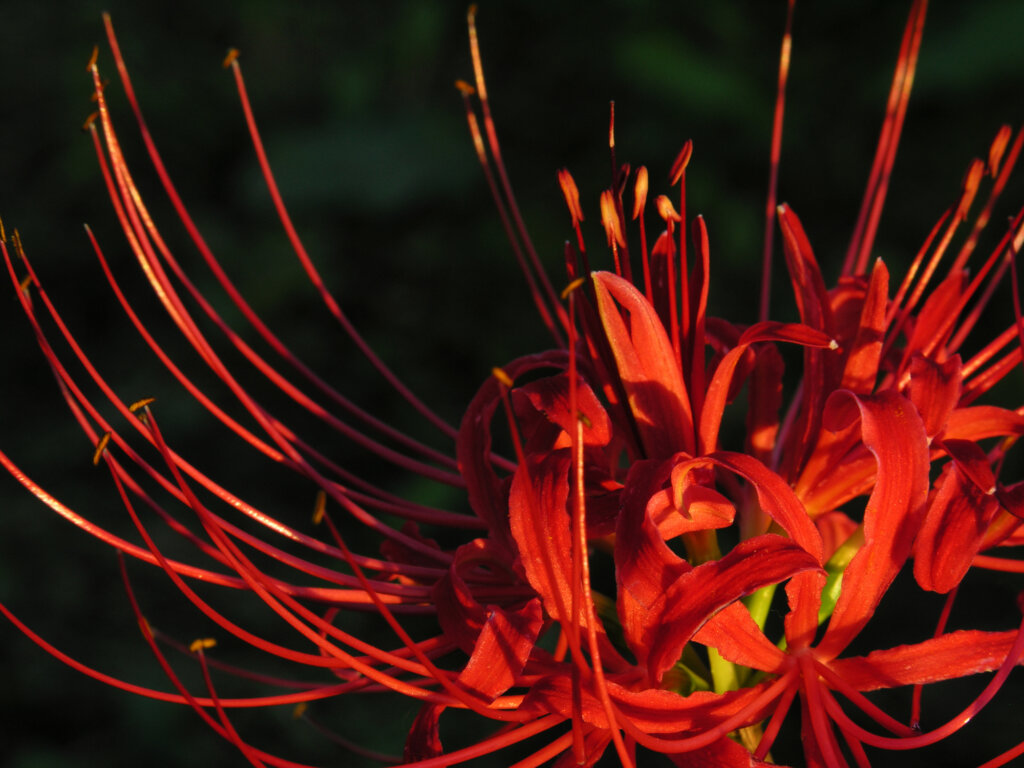
Higanbana (Lycoris Radiata), also known as the ”Red Spider Lily“, is a plant in the amaryllis family. This flower of Far Eastern origin, known as the red magic lily or the equinox flower, has a separate story and meaning from its place in ecology. It is the red one that stands out and is widely known for this flower, which has blue, yellow, pink and white colors.
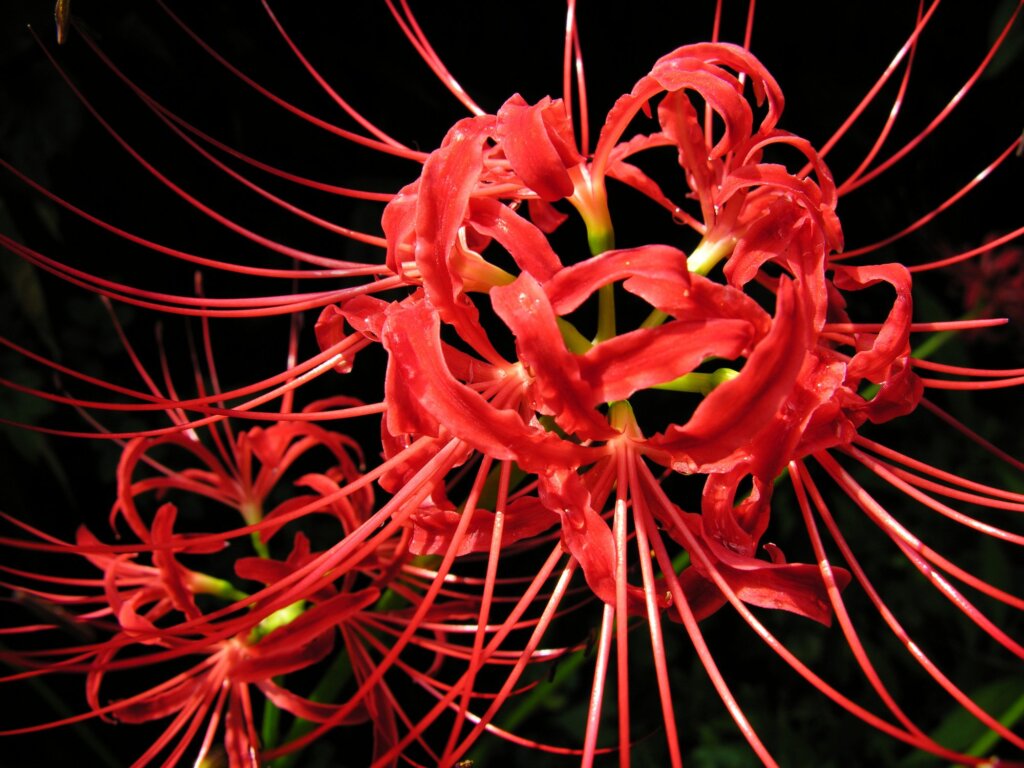
The names and stories of the higanbana flower, which are used as metaphors in the world of cinema and especially in the world of anime, have different meanings. In this article, we have included the importance of higanbana flower and its reflections from a cultural point of view. Let’s take a look…
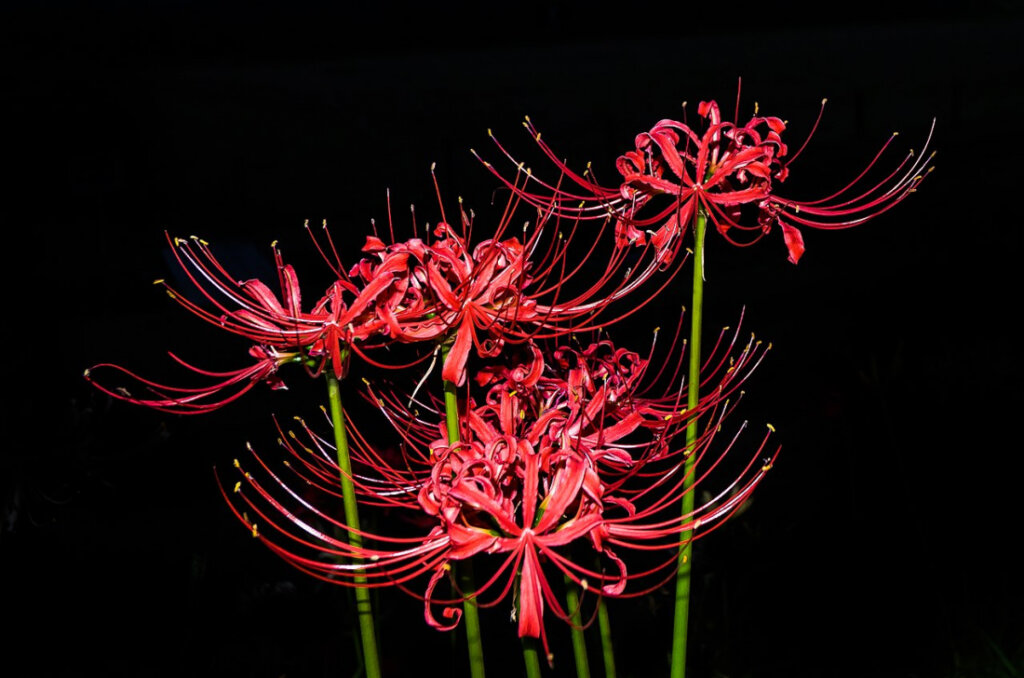
Where Does the Name of the Flower of Death Come From?
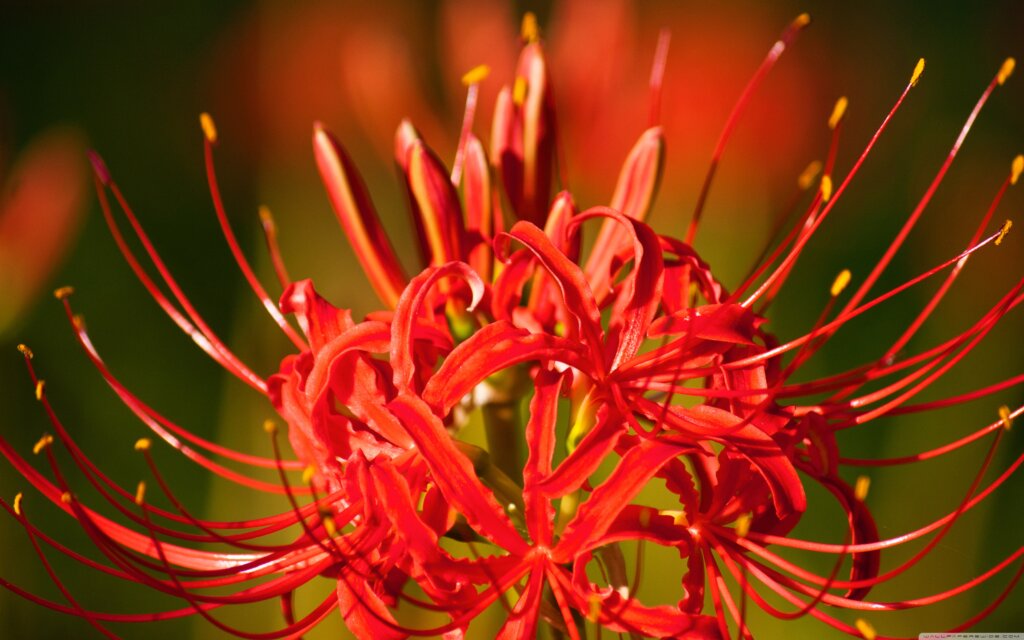
Many of us know the depth and significance of the world of Japanese mythology and its legends. In addition to the fact that these legends are often stories that have features specific to animals, nature, plants, or even a place, they have very wide areas. The higanbana flower is also a plant that grows near cemeteries, so in legends it often causes death. Let’s touch on the different stories of this unique flower.
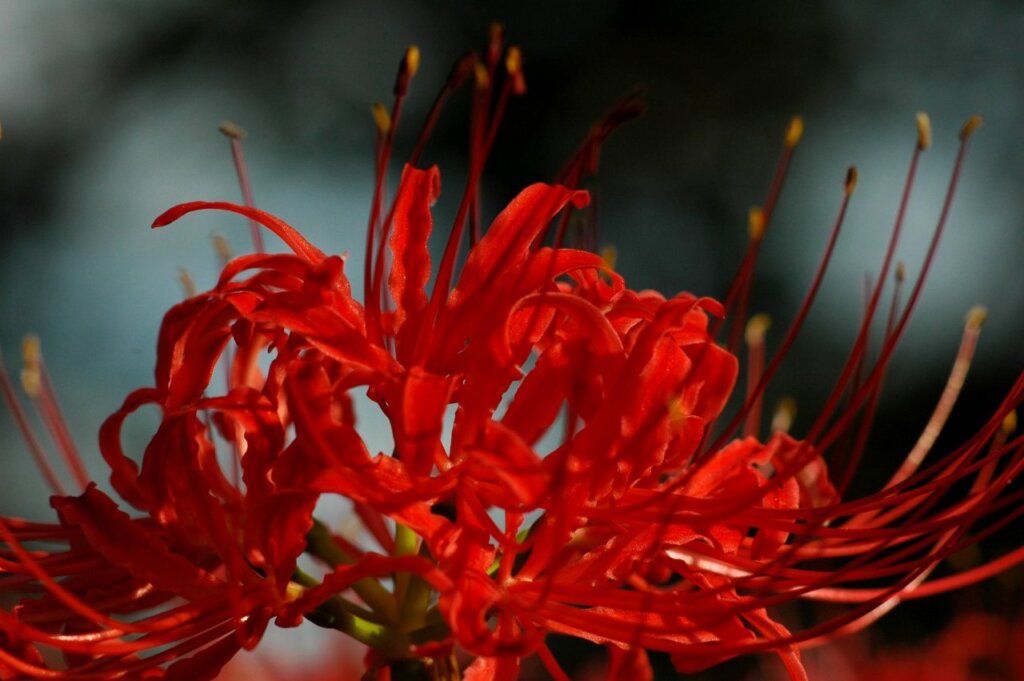
The story of the red spider lily, known as Higanbana ( Hig) in Japanese; begins with a beautiful autumn scene in Ohio, a Buddhist holiday in late September. This period, just before the autumnal equinox, has given rise to one of the most fascinating sights of any flower on Earth.
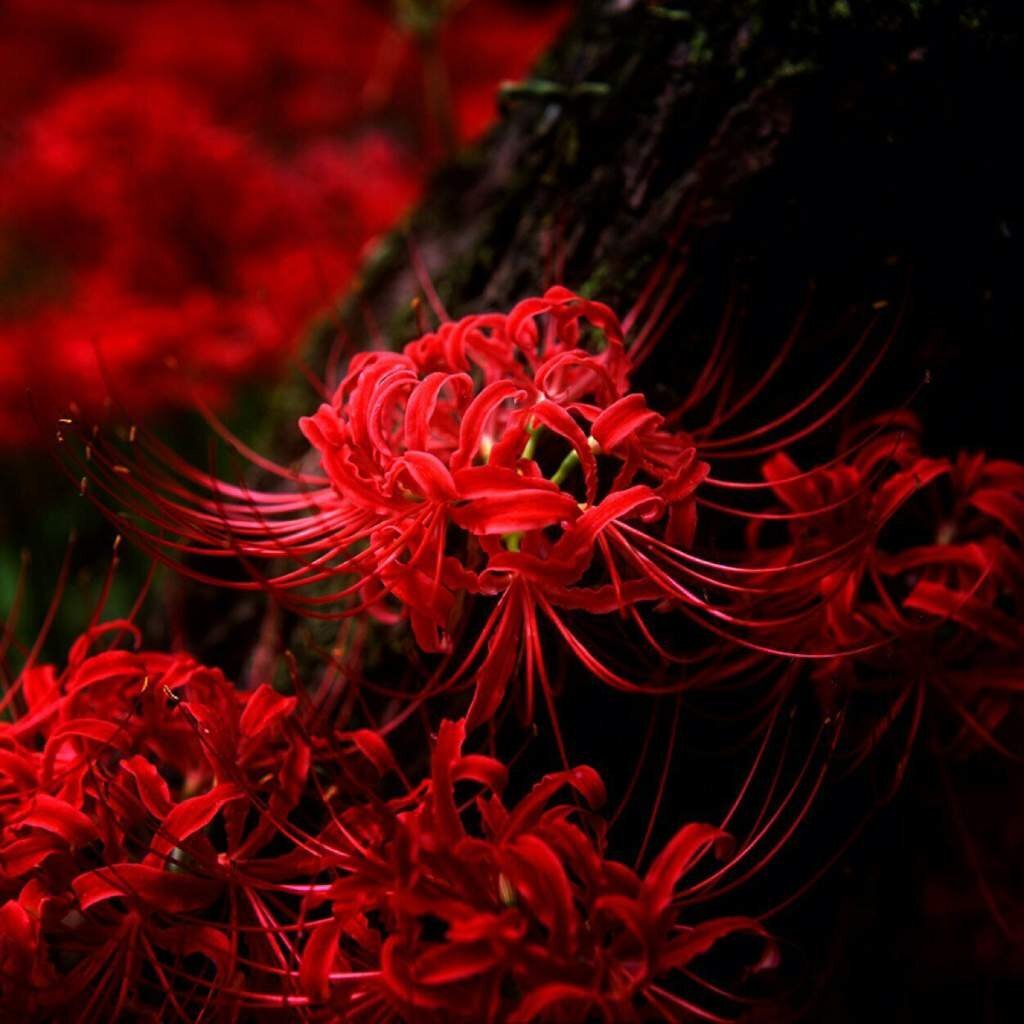
In Japan, Ohio is the time to return home to visit the graves and pay homage to their ancestors. This process also coincides with the short flowering period of the red spider lily, which unusually blooms in early autumn. The flower is so named because of its association with the Ohio and the autumnal equinox.
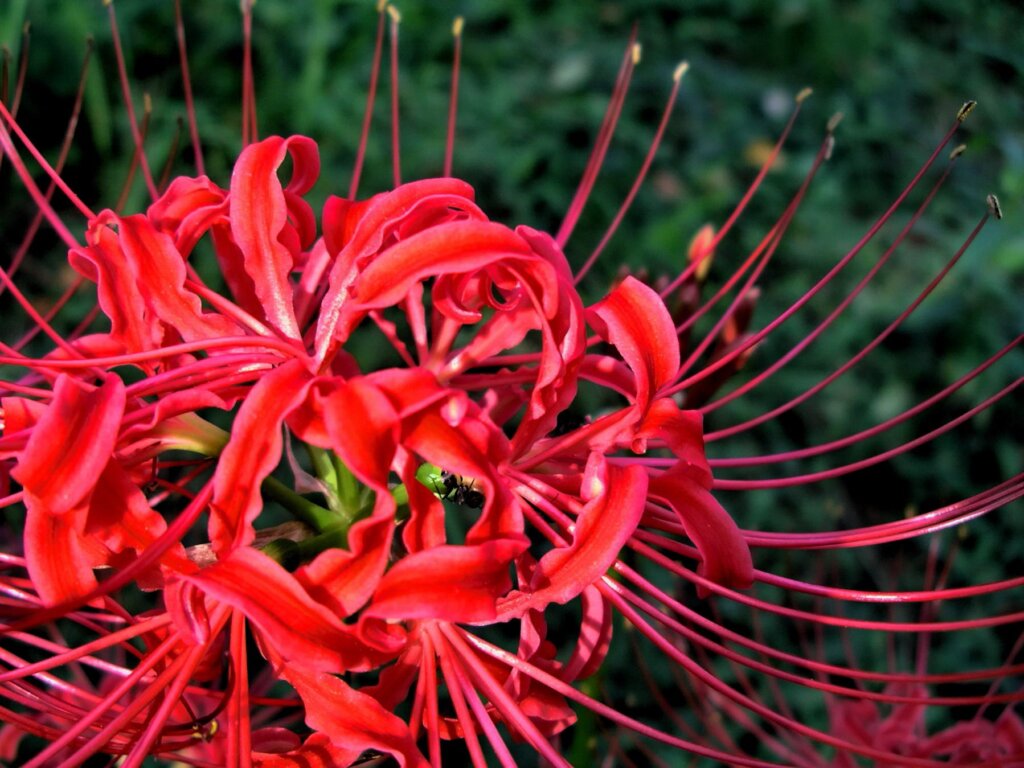
Higanbana is a flower that blooms mainly in autumn. In addition to its apparent beauty, the petals open before the October come out. The flower looks like a spider web with clustered, standing petals that settle on the stem. Higanbana, which coexists with its color and vitality, offers a view as if it were a red Decembers sea.
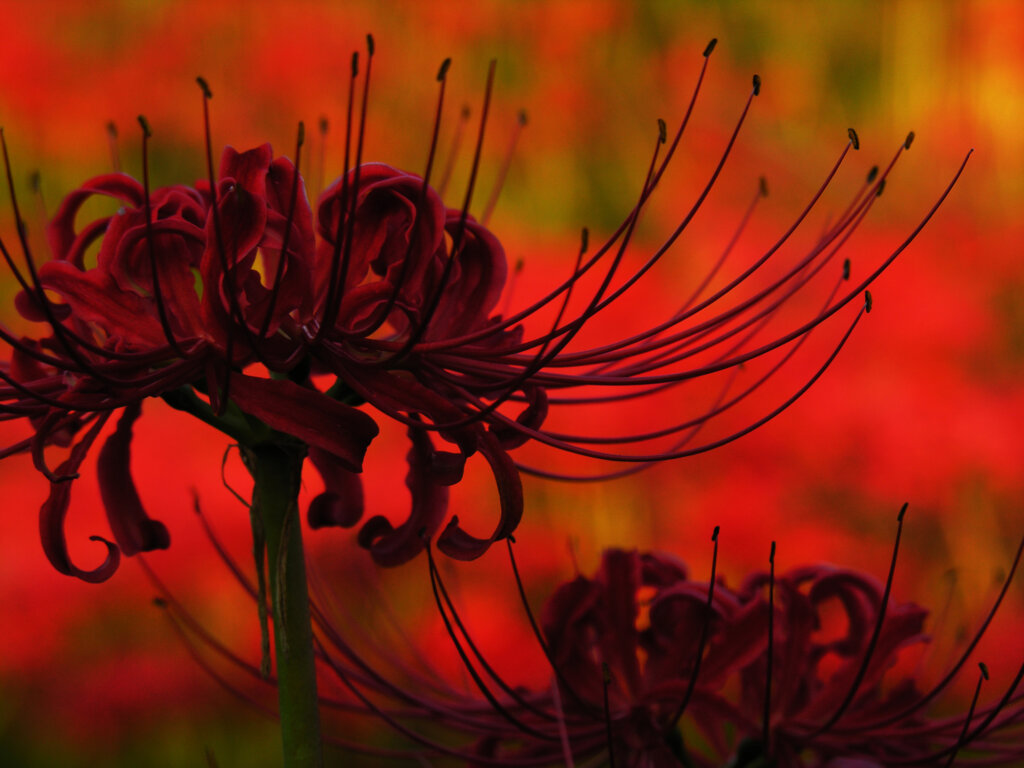
In this plant, the leaves appear later and give life to the plant once again before turning brown, and the plant dies a second time, returning to the ground. This feature of higanbana, which has a different growth habit, is described in a Chinese legend
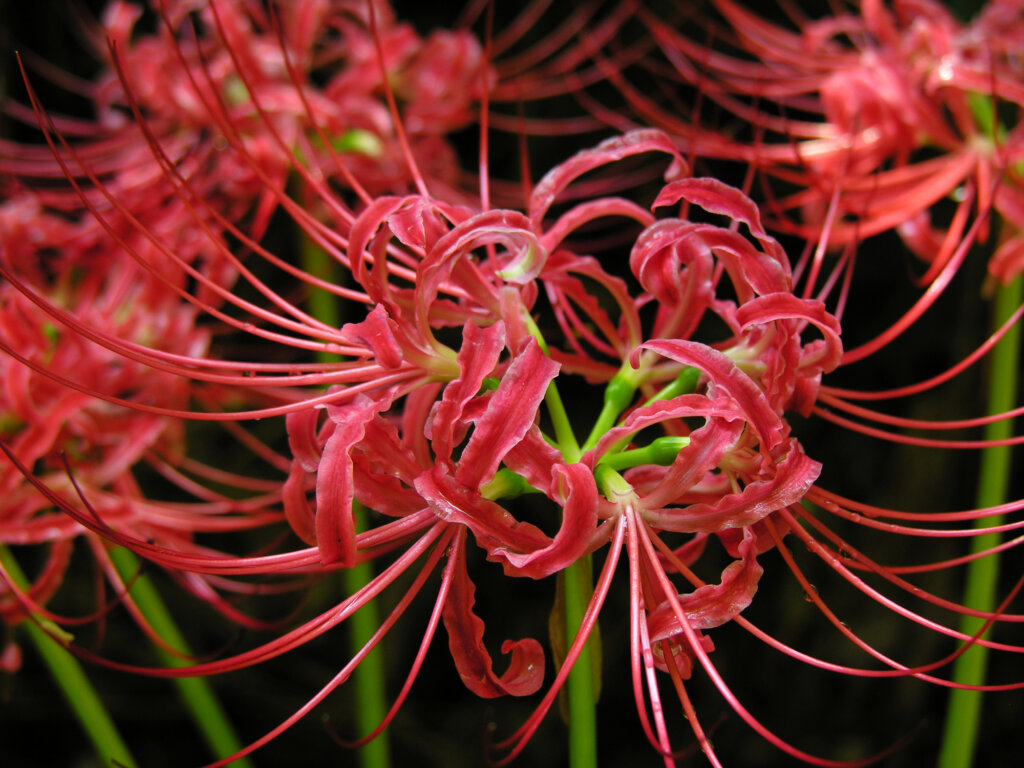
In the story of a different name, it is believed that he drank the blood of the dead in the grave and attributed them more to death, because the grave was erected around them and opened in the same color as the blood. Because of this situation, it was thought that some of them reflected like ghosts, and that is why it was also called the “ghost flower”.
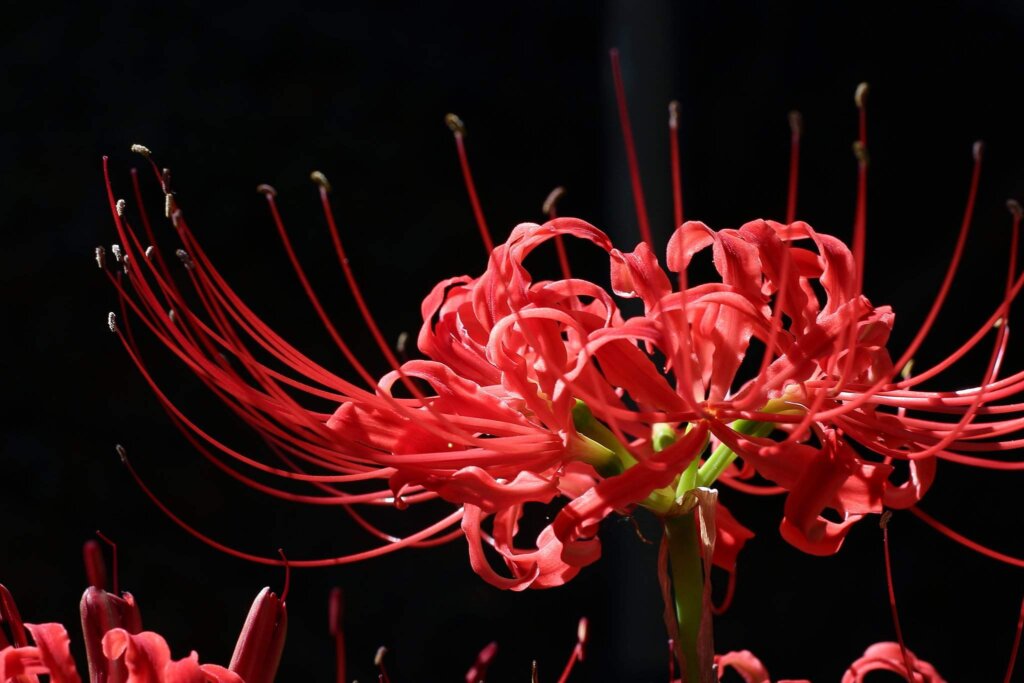
These flowers, which were often seen in cemeteries in past eras, do not grow everywhere because they are poisonous. In Japan, when people were dying, they buried the bodies directly in the ground. They did not want their graves to be disturbed by animals and insects, so they planted red spider lilies on the graves.
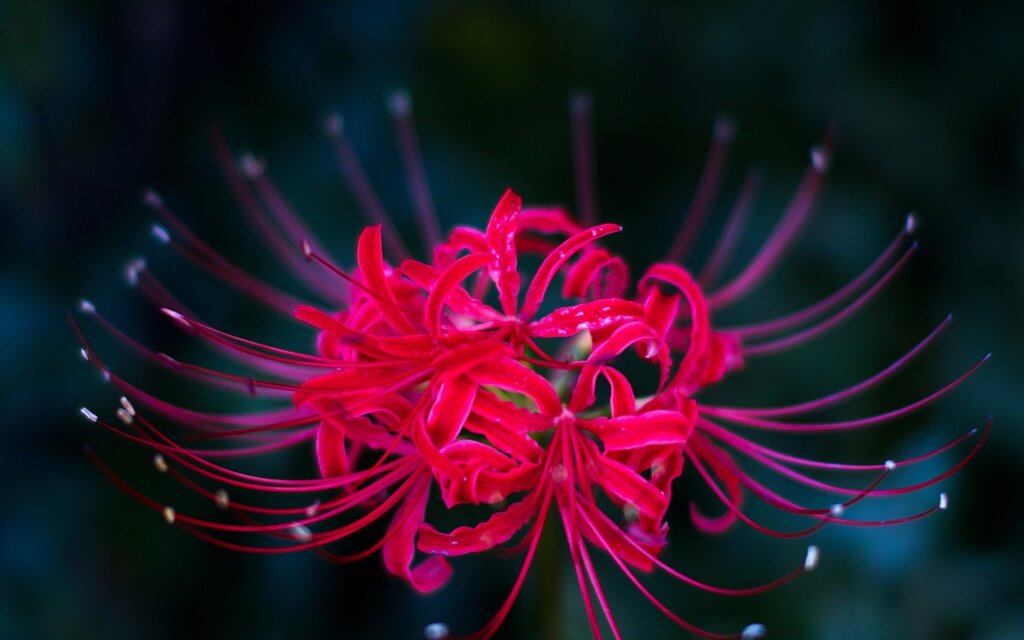
According to another story, if the relationship of the flower with Buddhism is also related, it is more than a coincidence that higanbana was opened during the celebration of Ohigan (the celebration of the change of the equinoxes). The flower is also called Manjushage ( death), which has nothing to do with death and is one of the few names from Buddhist inscriptions.
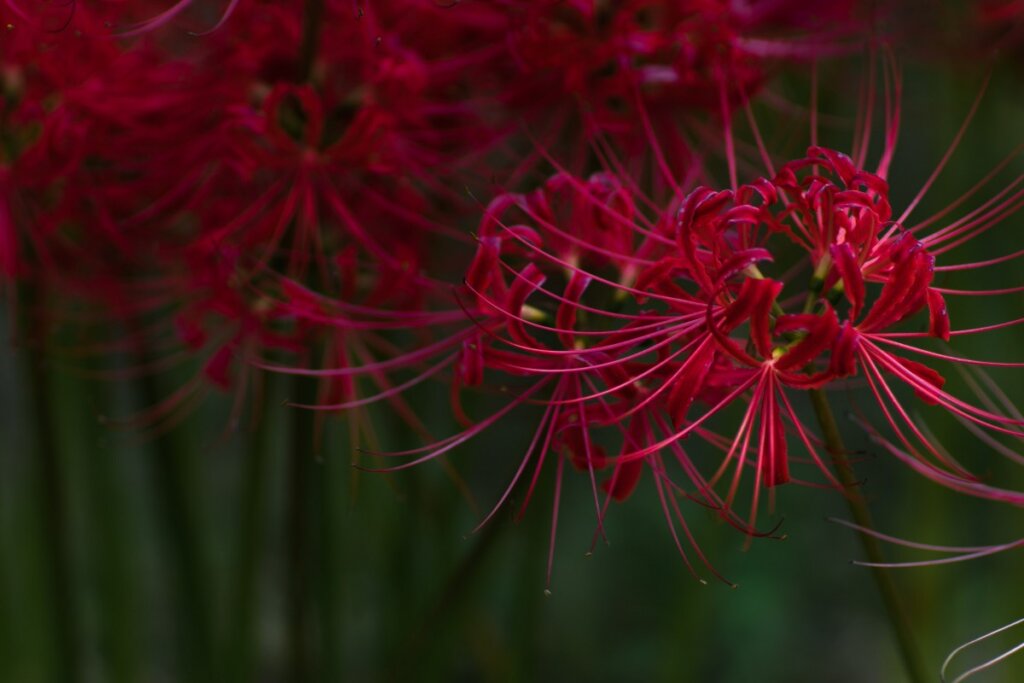
The Decjushage is a celestial flower that is not among us, but the red spider lily was planted by the monks to represent it. Therefore, it has been associated with Buddhist temples. There are also white spider lilies, more commonly known as Manjushage.
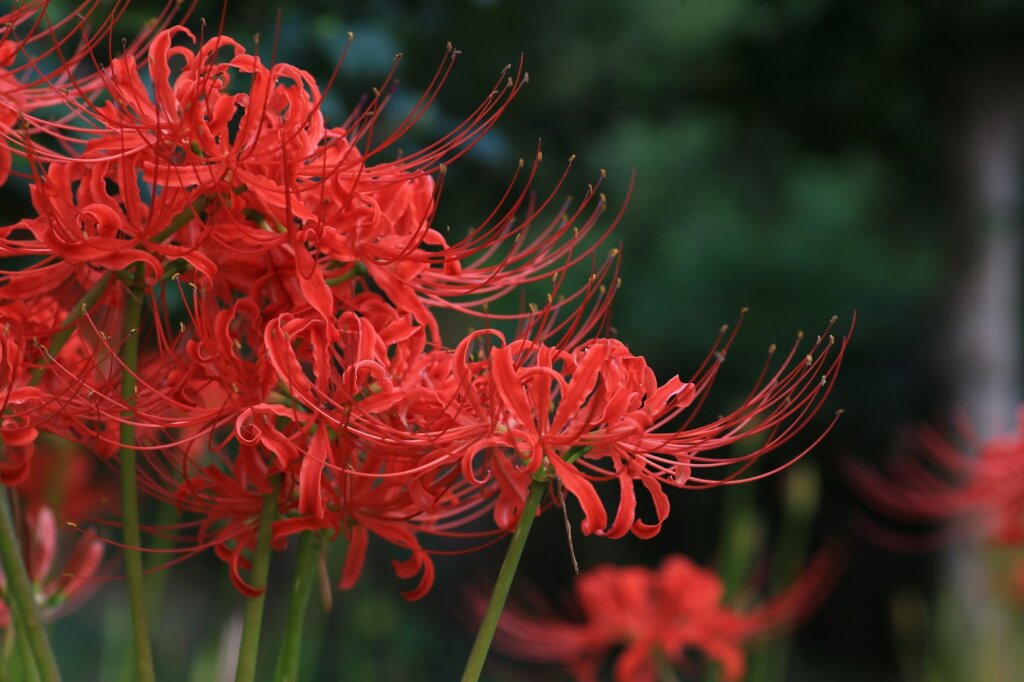
“Ohigan” has another meaning than a holiday to honor the ancestors. In the Buddhist Heart Sutra, higan means ‘other shore’, referring to the legendary Sanzu River. Spirits cross this river to achieve enlightenment, so it is often seen as a symbol of passing to death. Spider lilies grow on the banks of the Sanzu River and greet newly departed souls.
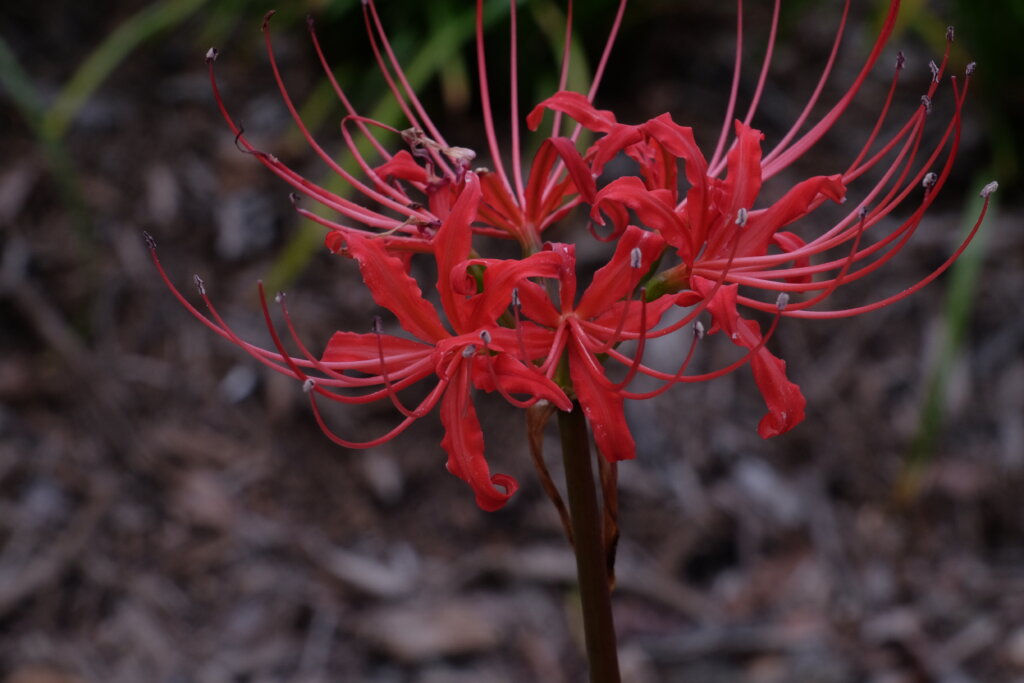
In the Lotus Sutra, another Buddhist text, Diyu is the land of the dead or hell. It is said that red spider lilies grow there and signal a way to guide souls to reincarnation. Another name for lilies is “hellflowers”.
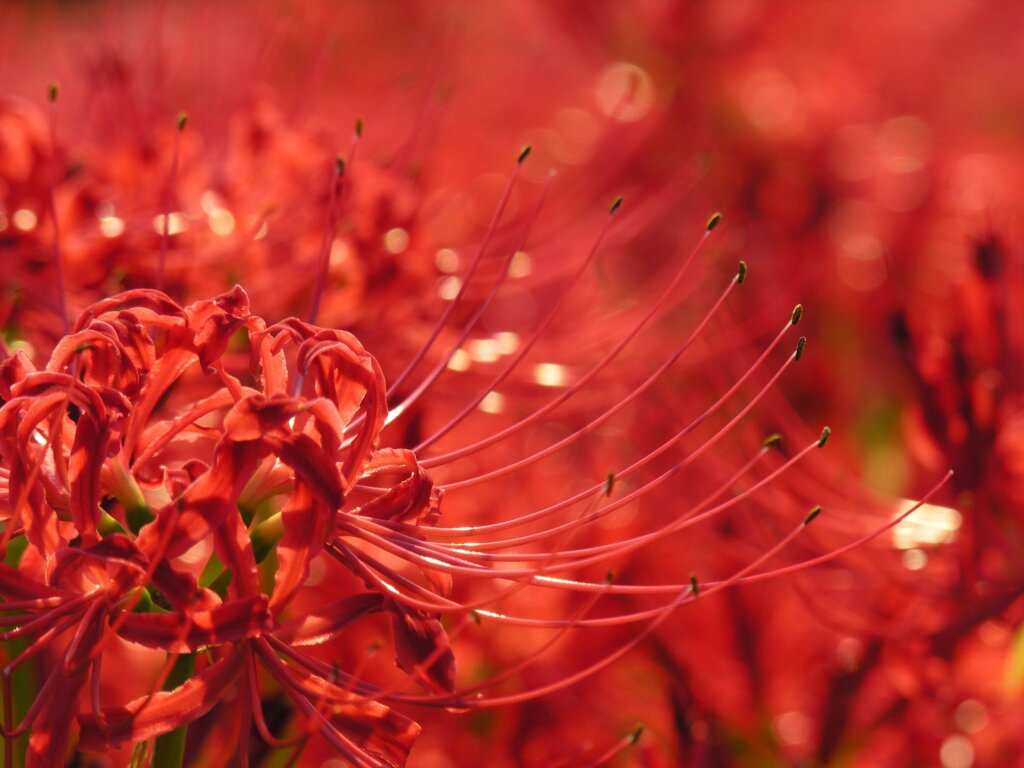
This mysterious flower with different stories and names also has different symbols in houses. For example, according to one legend, it is believed that plucking one of these flowers and bringing it home will cause our house to burn down. It is also not right for people to give to each other.
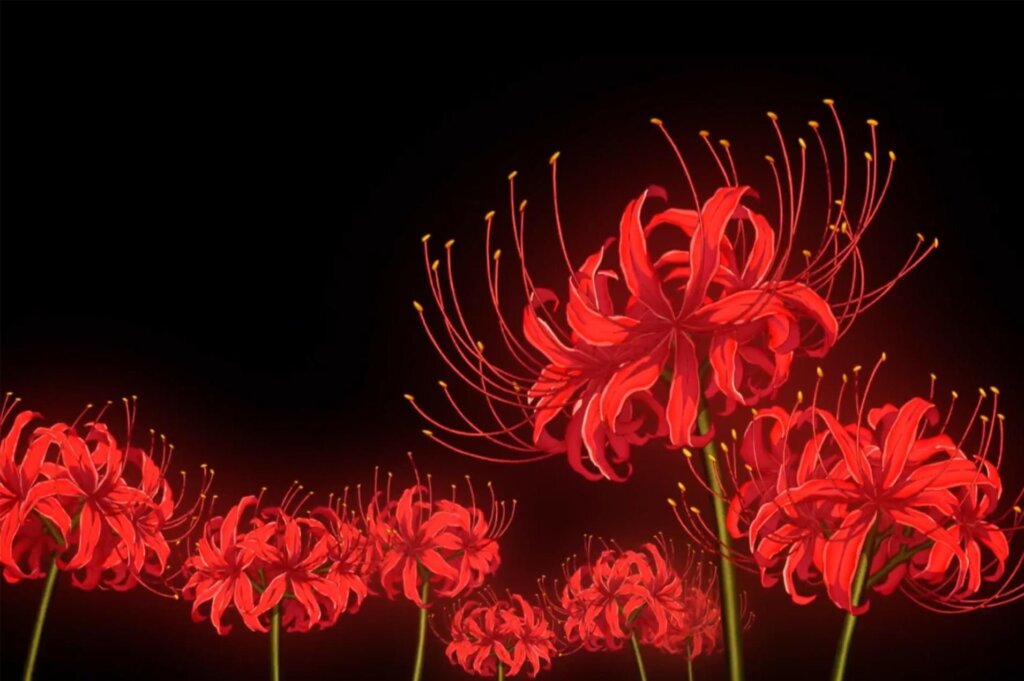
The Symbol of the Anime World
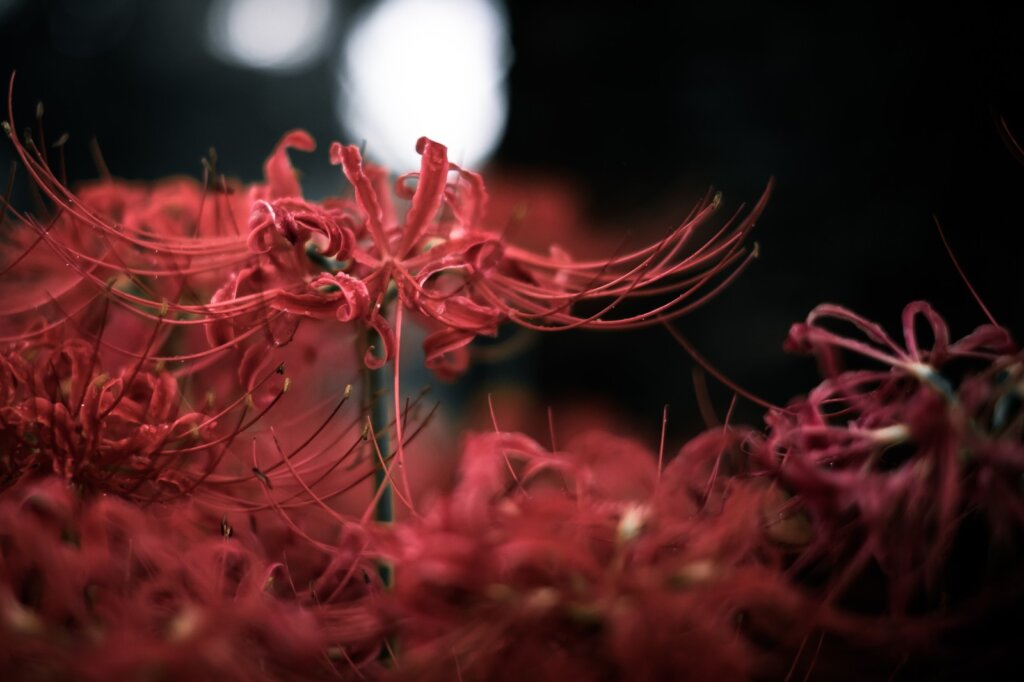
In Japan, flowers are considered a symbol and meaning in a different field. Higanbana finds a place as one of them in poetry, the world of cinema, mythology and anime. In the anime world, this flower, which is also included in an anime, is known to the viewer as a harbinger of death. Although it may seem like a coincidence at first, it is never a coincidence that this flower is included in the anime image.
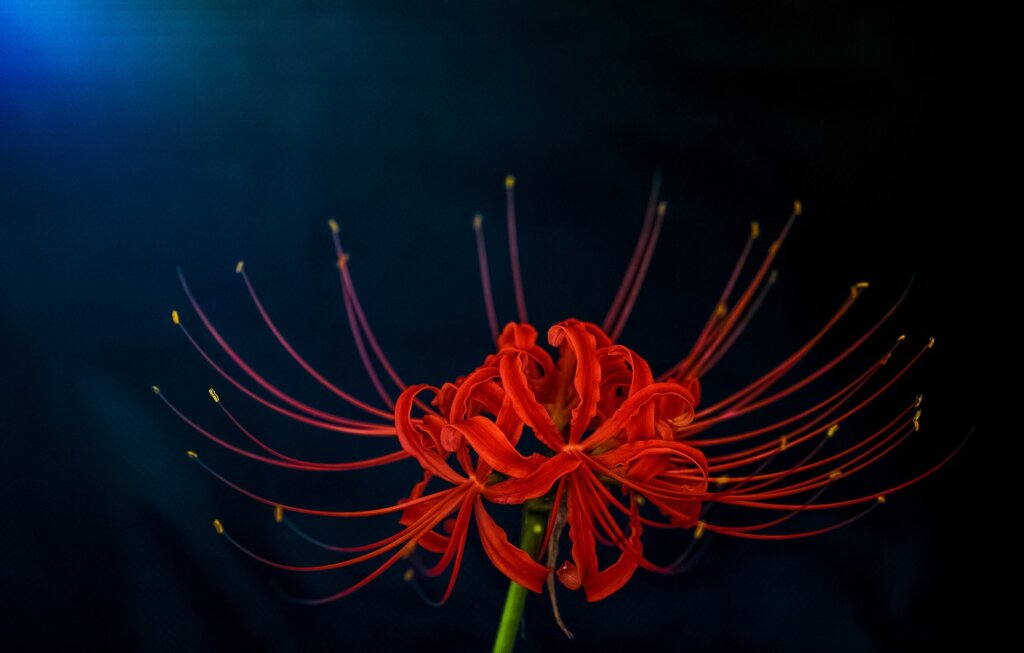
If this flower, which we have mythologized as a harbinger of death, is included in an anime, it means that a character in that anime will die. In a way, it gives information about the subject flow and a very big event in the story. Although it gives information about what will happen in the story, it actually increases the depth of the story in the anime more in terms of its processing.
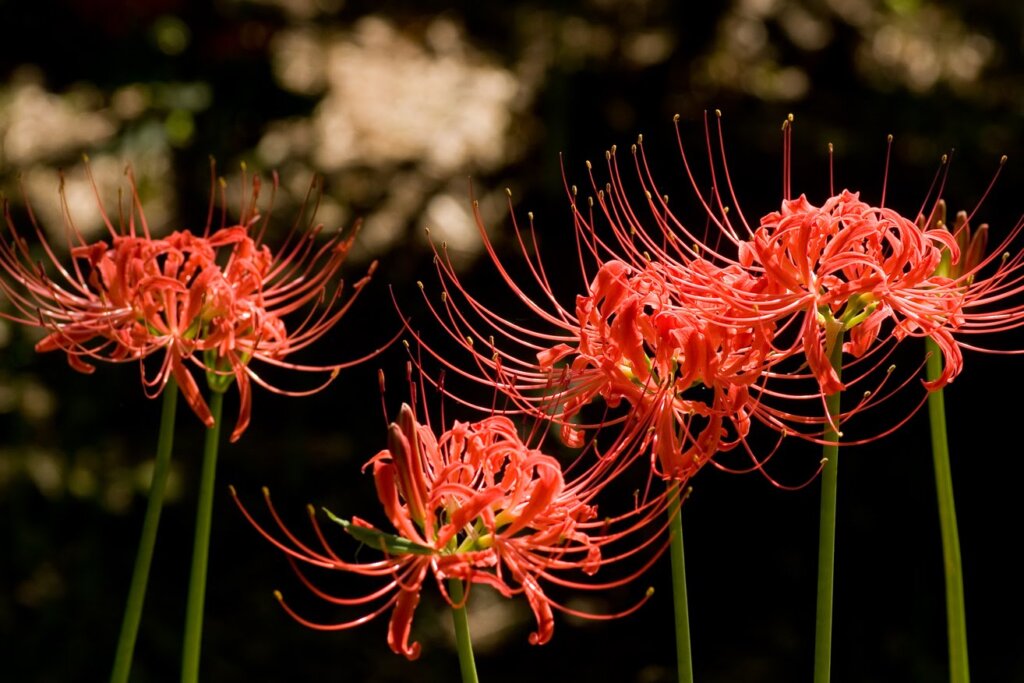
We think that if you find a name or someone somewhere you will remember our article.
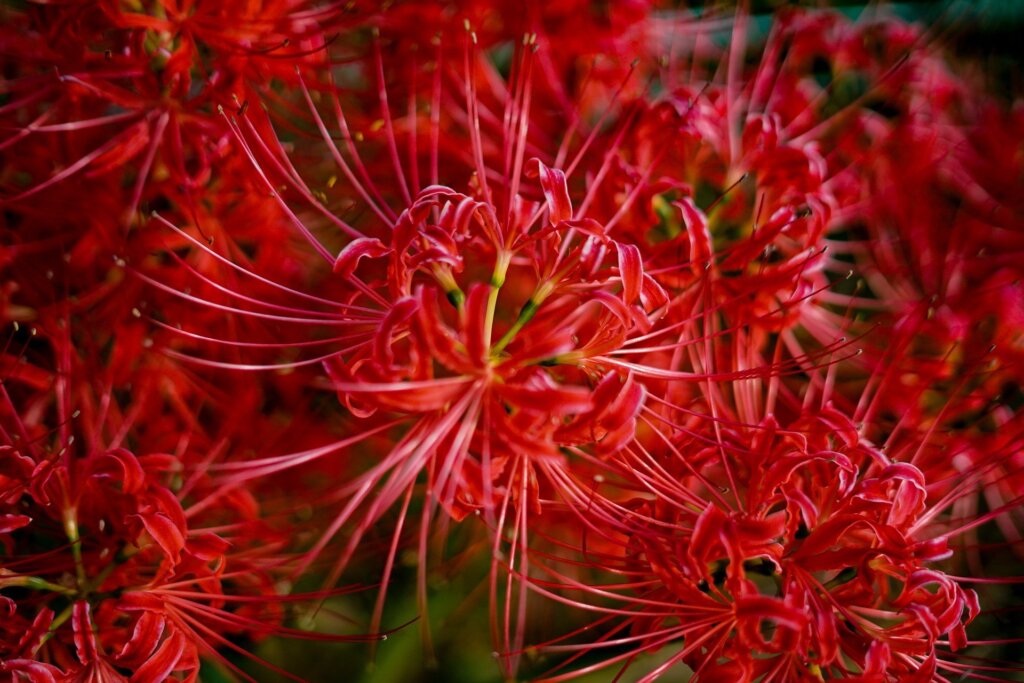
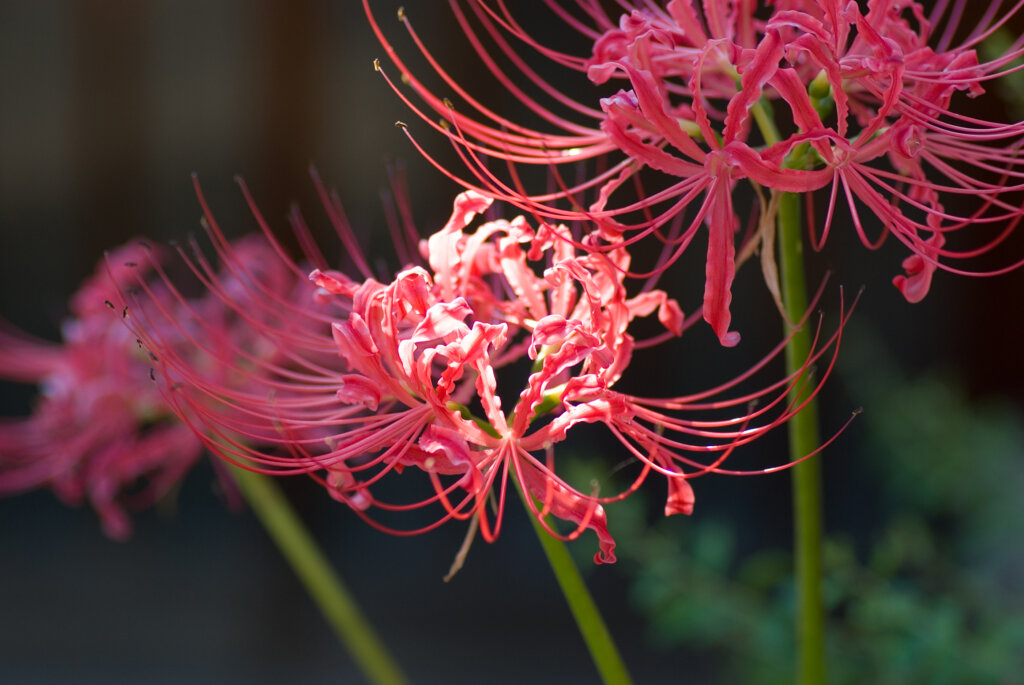
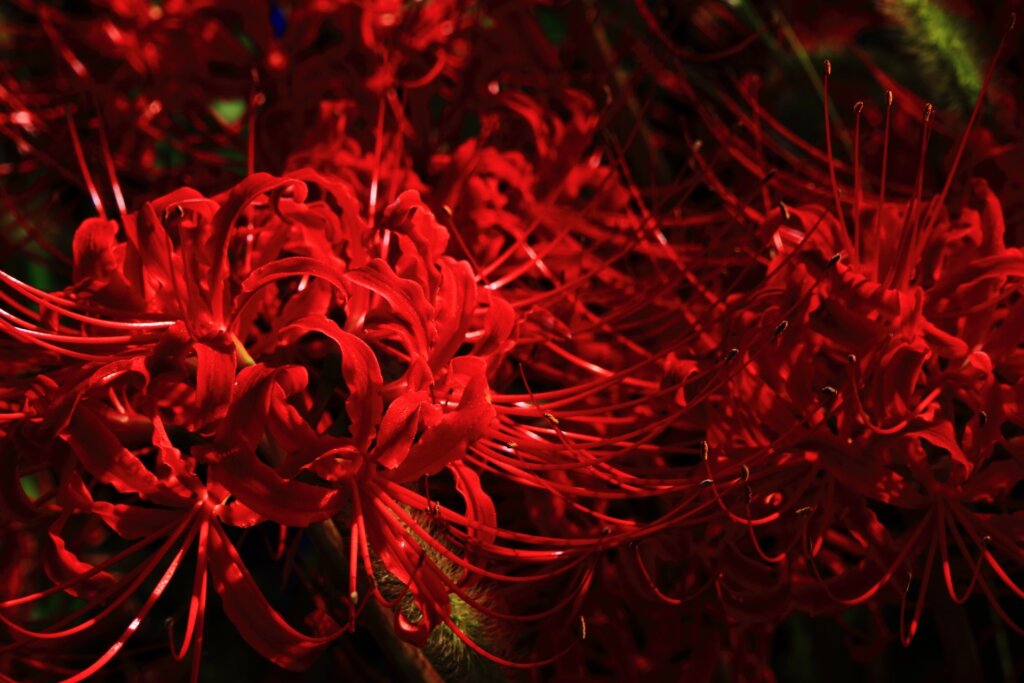
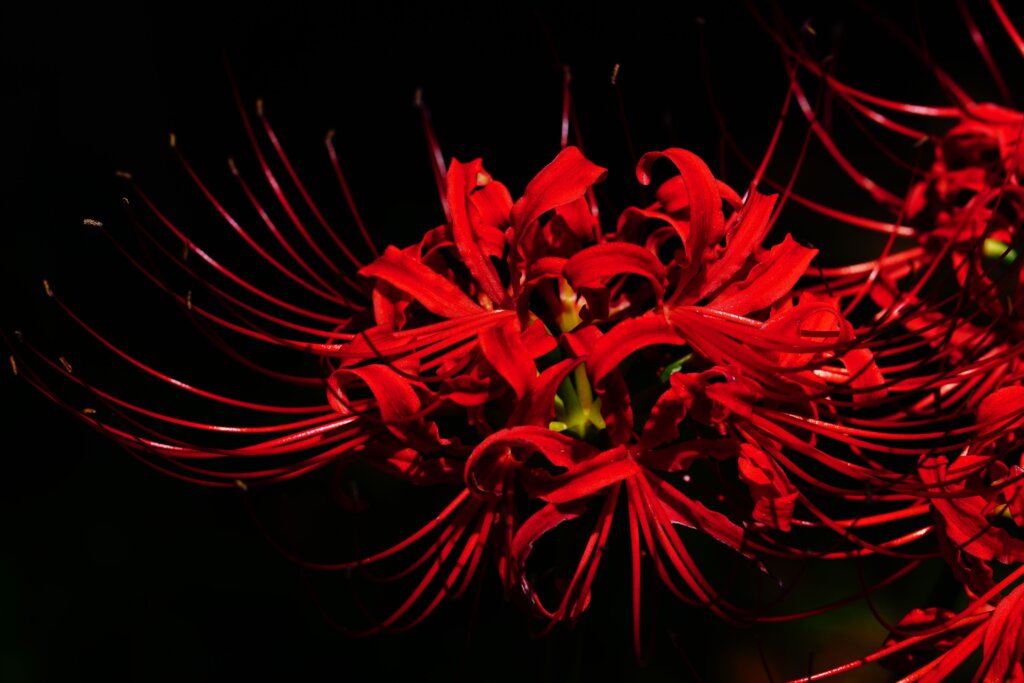
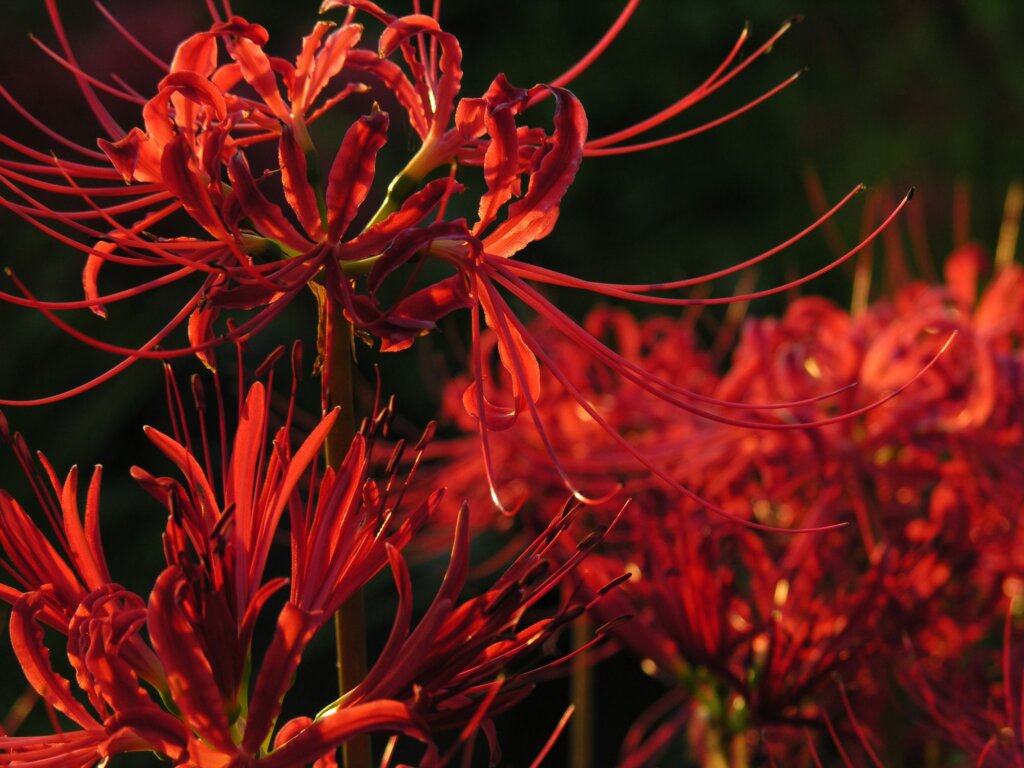
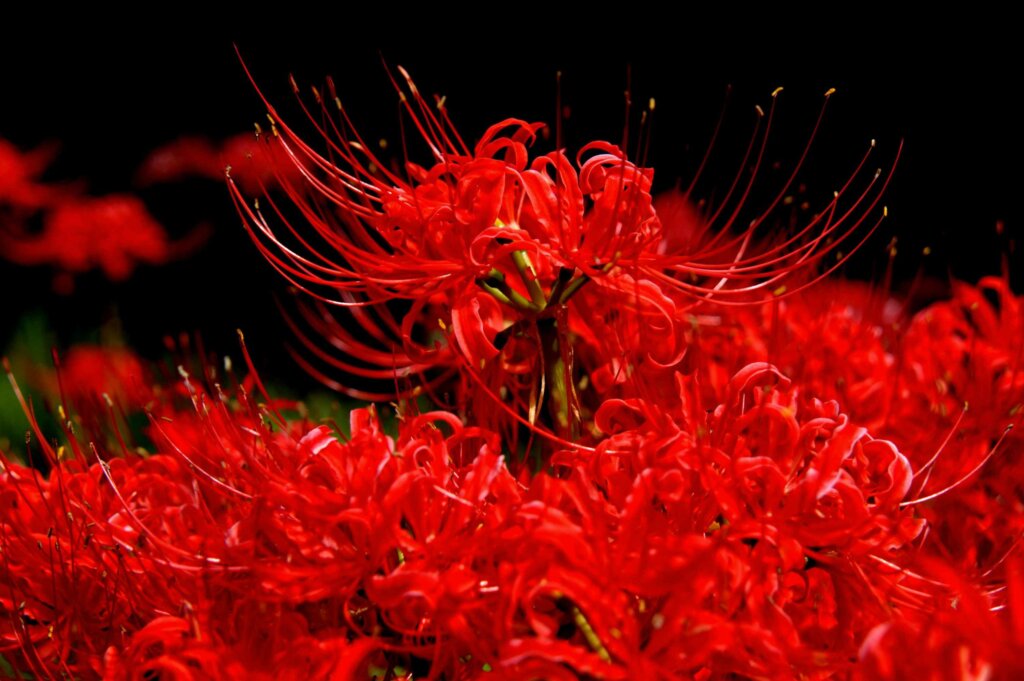
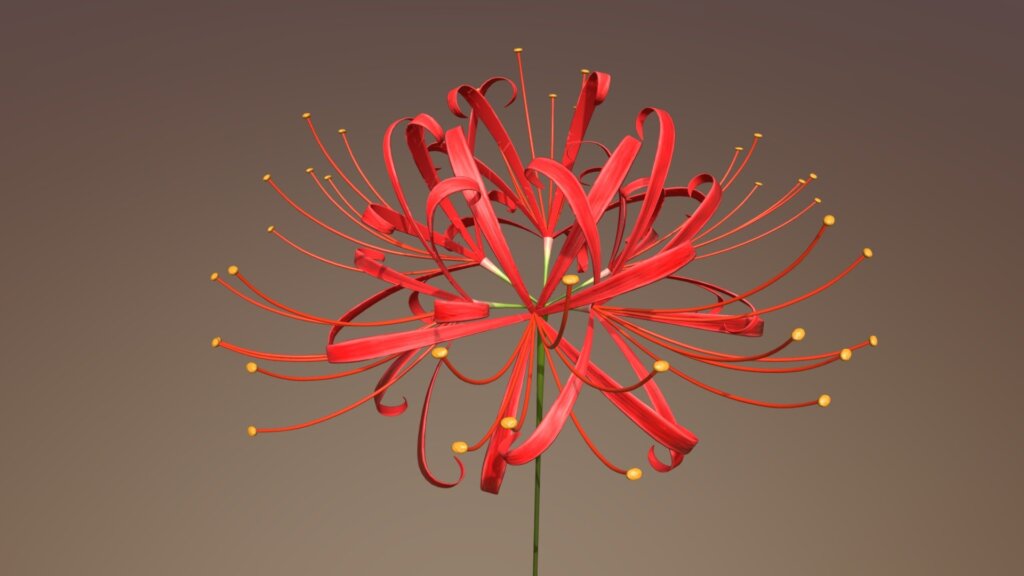
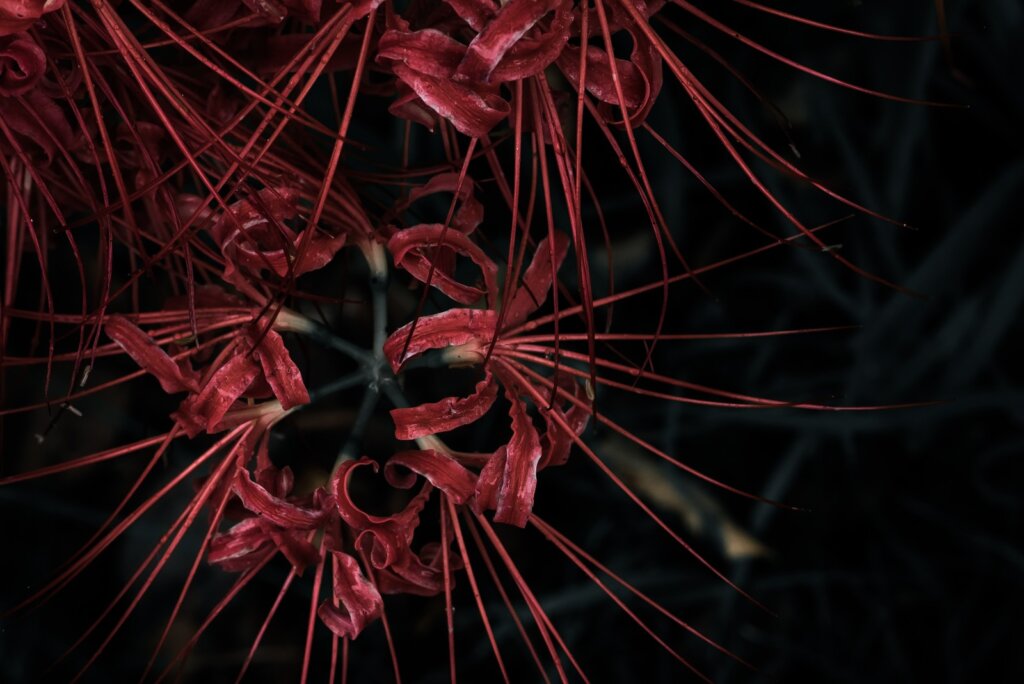
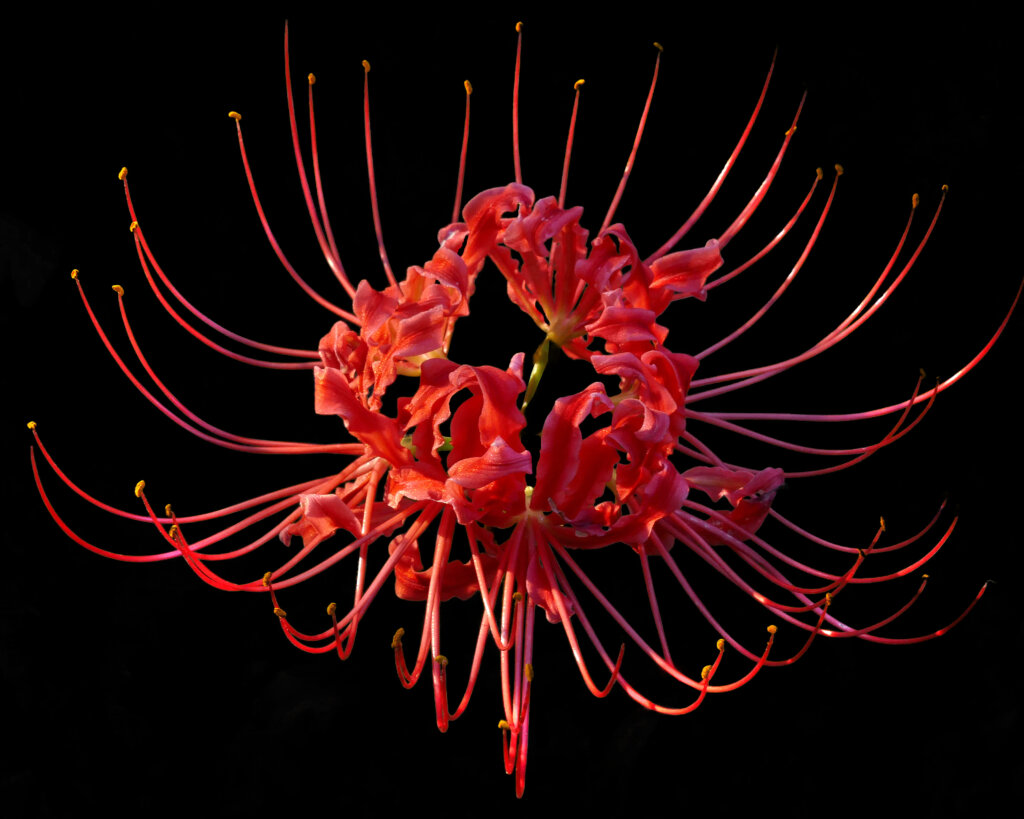
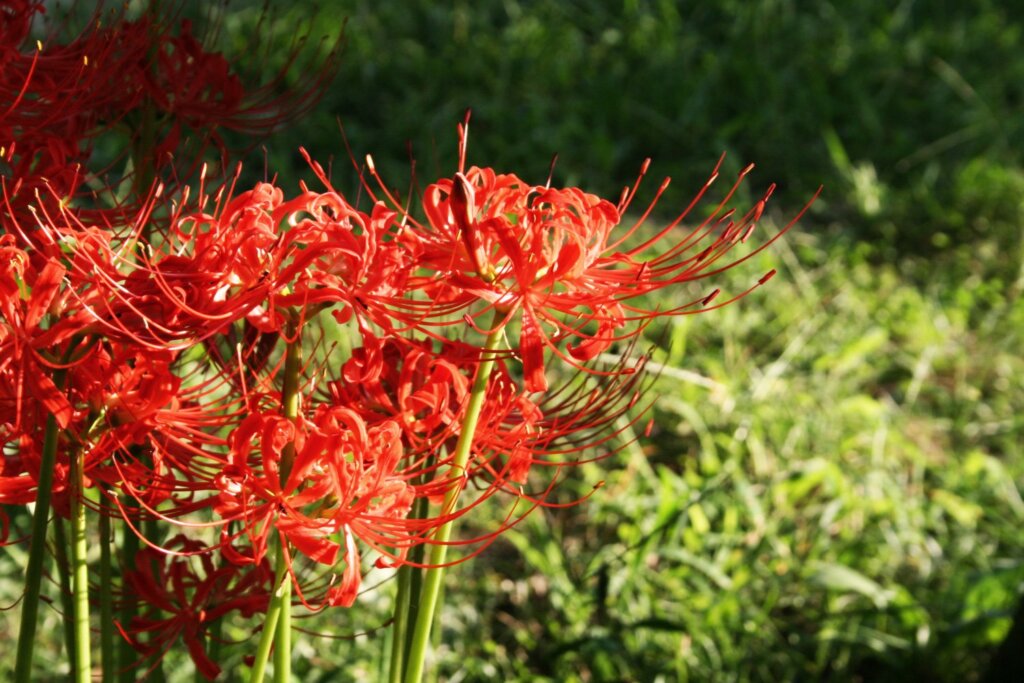
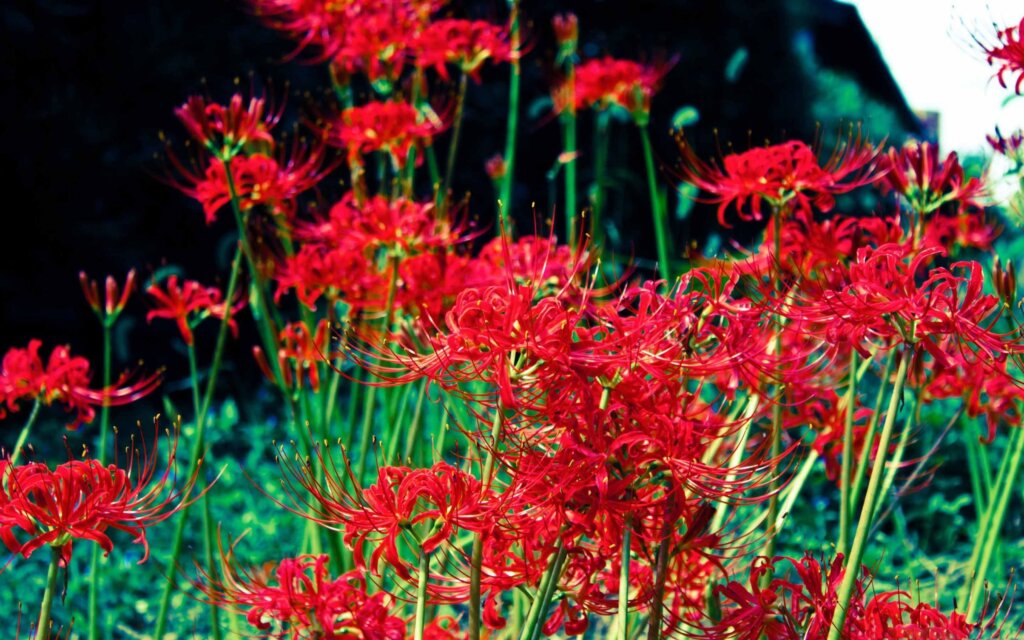
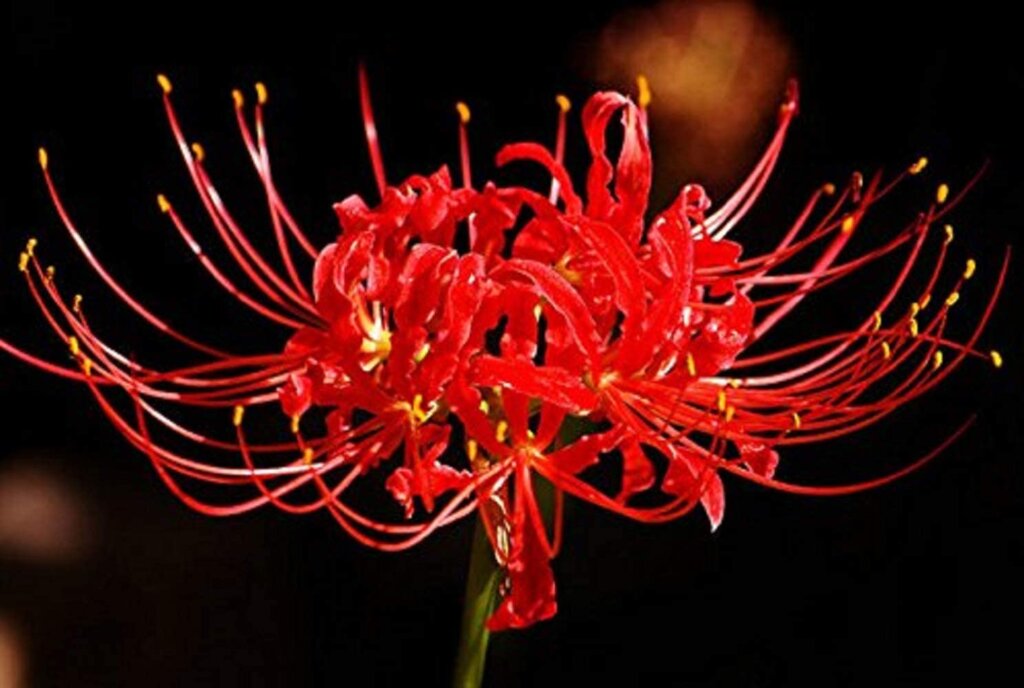
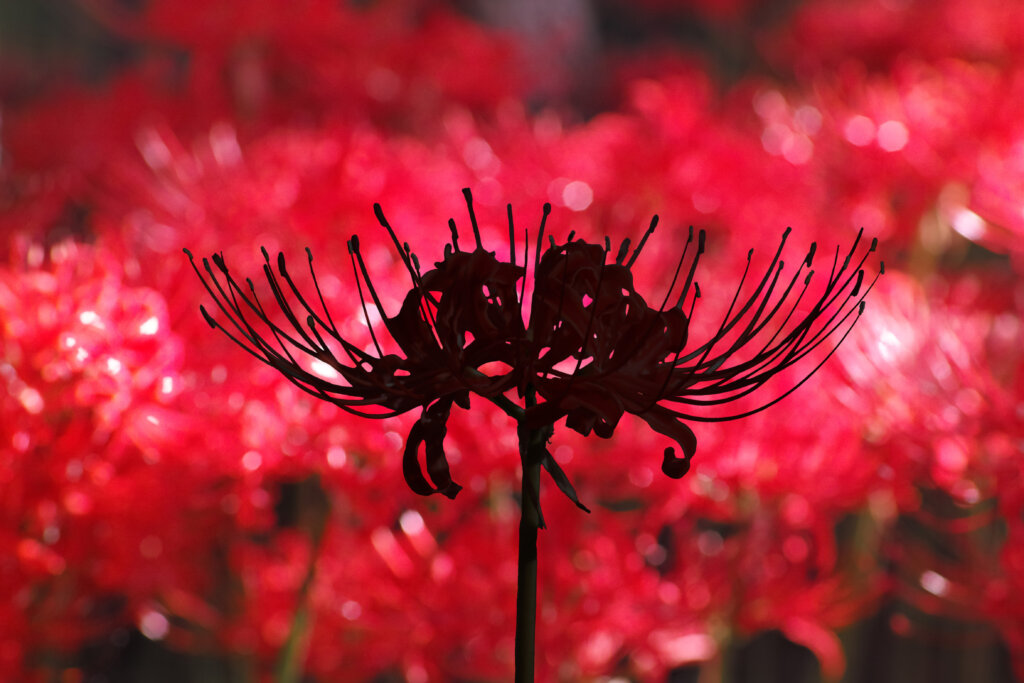
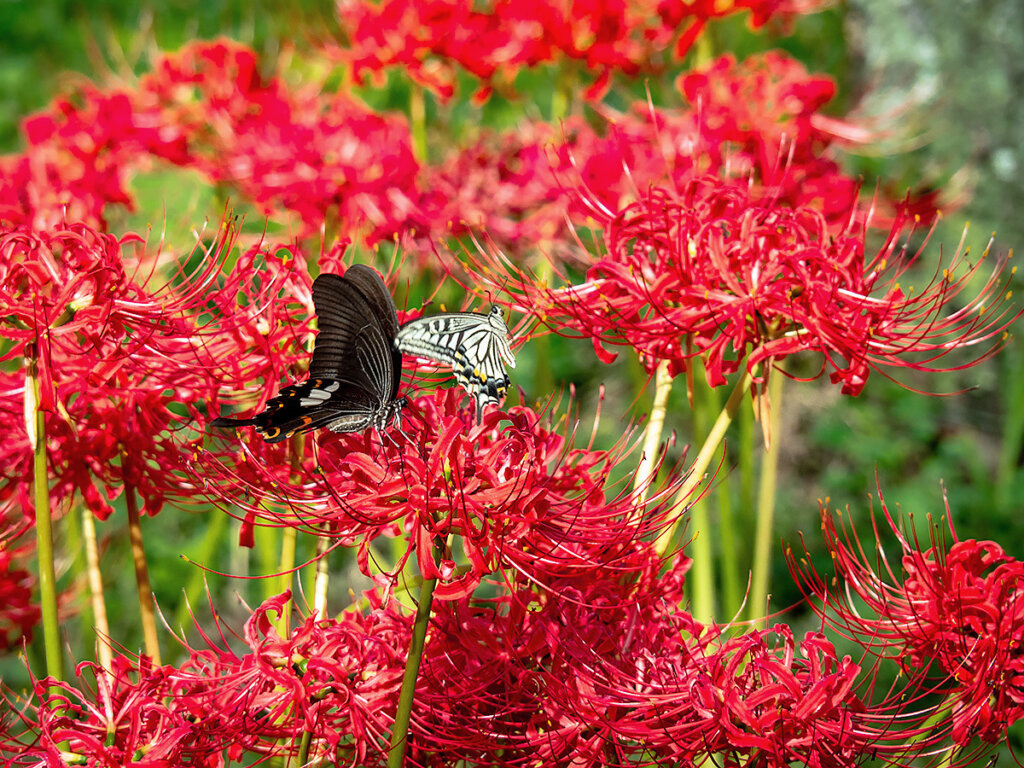
0 Comments